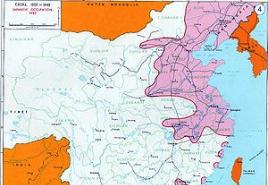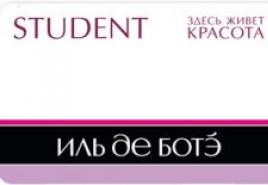Alexandra Bonina “The Secret of a Healthy Neck” - super exercises against cervical osteochondrosis. Therapeutic complexes for problematic backs Alexandra Bonina evening therapeutic exercises
Cervical osteochondrosis mainly occurred in elderly people. But nowadays this disease occurs in people of all ages. Osteochondrosis of the cervical and thoracic spine is found in school and university students, office workers, drivers, in short, for everyone who leads a sedentary lifestyle.
Getting rid of this pathology consists of a set of measures consisting of drug therapy and gymnastics. Exercises according to Alexandra Bonina’s method will be very effective.

Alexandra Bonina is a physical therapy doctor with a higher medical education, a sports medicine doctor, and a practicing fitness trainer. While studying at medical university Alexandra herself suffered from osteochondrosis. After getting a job at a fitness club, she saw that many people had this disease and did not know what to do with it. Then Alexandra, using her knowledge and accumulated experience, developed her own method for eliminating osteochondrosis. Her video lessons are presented in an extremely accessible manner and are understandable to people who do not know special terminology. The exercises themselves are clear and easy to perform. Another convenience lies in the fact that no special equipment is required to perform the training complex.
Neck exercises
In the treatment of cervical osteochondrosis, physical therapy is indicated for mandatory implementation. A person with any level of physical development can perform it. With constant training, muscles are significantly strengthened and the development of the disease is inhibited.

Before starting the workout, you need to do a warm-up to warm up the joints and muscles of the upper limbs and shoulder region. When warming up, the neck is at rest.
- Bend your arms at the elbow joint, place your hands on your shoulders. Rotate your shoulders in a circle 10 to 15 times in both directions. You need to move very slowly to avoid feeling pain.
- Place your hands parallel to the floor. Next, we bend and straighten our arms at the elbows, moving our palms to our shoulders and back.
After completing the warm-up, we begin performing basic exercises for the cervical spine. They are quite simple, but the actions must be very careful to avoid damage to the ligaments and vertebrae.
Main training complex:
- Place your fingers in a lock and rest your forehead on your palms. Next, using the back muscles of the neck, you need to try to push your palms away with your head, and use your hands to hold your head in the same place. In this exercise, it is the neck muscles that work, not the vertebrae. The exercises must be performed every evening 7 times, the duration of one approach is 5 seconds.
- As in the previous exercise, clasp your hands and place them on the back of your head. Then try to move your head back, while using your hands to prevent your neck from bending. In this case, the muscles of the back of the neck are also trained, and the spinal column is not loaded. It is necessary to repeat 5-7 times for 5 seconds.
At the end of the workout, you should stretch your muscles. This will restore joint mobility and blood supply to the cervical area.
To do this you need to do a hitch:
- Slowly pull your shoulders back, trying to connect your shoulder blades. It is important to ensure that your shoulders do not rise.
- Inhale deeply and at the same time raise your arms above your head or parallel to the floor. Exhaling, slowly lower your shoulders down and relax them.
Bonina assures that the spinal restoration system she developed is suitable for absolutely everyone. But still, a number of contraindications should be taken into account:
- with an unspecified diagnosis;
- presence of implants in the neck;
- severe abnormal defects in the spine.
Course - eliminating thoracic osteochondrosis

Alexandra Bonina also developed a system for treating thoracic osteochondrosis. Course "7 effective exercises physical therapy to eliminate thoracic osteochondrosis" suggests 20-minute exercises on a daily basis. Organized and disciplined execution of training helps to get rid of severe pain within the first two weeks.
The duration of the course is from 3 to 6 months. After six months of regular exercise, you can get rid of osteochondrosis in the thoracic region. In addition, within 6 months, daily exercise becomes an integral part of the patient’s lifestyle. With this approach, the back muscles are strengthened and the person gets rid of pain.
Before purchasing full course exercises, it is recommended to watch Alexandra Bonina’s free introductory videos to understand whether this set of exercises is right for you.
There are also negative reviews from patients. They are usually associated with the fact that the course turned out to be ineffective. This, unfortunately, is quite likely; the author of the technique does not guarantee a 100% result. But since most people still leave positive reviews, then A. Bonina’s course can be called effective, helping to get rid of osteochondrosis of all parts of the spine.
Cervical osteochondrosis was previously considered a disease of older people, but in Lately this pathology is registered among the population of different age categories. Treatment of this pathology should be comprehensive and include not only medications, but also gymnastics. The secret to Bonina Alexandra's healthy neck is a series of exercises that allow you to strengthen the necessary muscles and get rid of pain.
Cervical osteochondrosis, its causes and symptoms
Cervical osteochondrosis is a chronic disease of the intervertebral structures, in which the cartilage tissue gradually thins, becomes saturated with calcium salts and becomes too strong.
The disease can develop for several reasons:
- during the processes of natural aging and wear and tear of tissues in old age;
- due to poor nutrition;
- as a result of a sedentary lifestyle.
Intervertebral discs become inelastic and are unable to absorb shock during movement. The process is accompanied by inflammation of the cartilage, periarticular structures and nerve roots. The patient feels pain that spreads from the neck to the back of the head. There may also be surges blood pressure, numbness of limbs and others alarming symptoms. The diagnosis is made on the basis of instrumental and laboratory studies, and treatment should begin at early stages.
Who is Alexandra Bonina
Alexandra Bonina is a certified specialist in physical therapy, sports doctor and a competent fitness trainer. She knows firsthand about osteochondrosis, because in her student years she herself suffered from this disease due to many hours of sitting at textbooks. Thanks to the knowledge gained at the institute, she was able to develop a set of exercises that will relieve the manifestations of osteochondrosis at any age.
Her patients include people from all over the world with varying levels of fitness and varying stages of illness. Due to the impossibility of consulting everyone personally, she released a course of training videos, which are presented on her website. Among them there are also detailed free videos that anyone can watch. You can also contact your doctor personally so that she can advise the correct therapeutic exercises in each specific case.
A set of exercises for the neck
Exercise therapy for cervical osteochondrosis is a mandatory stage in the treatment of the disease. They are simple and do not require a high level of physical fitness. They are easy to perform on your own at home, but you must listen to the sensations and prevent pain from occurring. With regular training, you can strengthen muscles, stimulate blood supply to tissues and stop the development of osteochondrosis.
Warm-up
Warm-up for the cervical spine is performed at the beginning of the workout. First you need to warm up the muscles and joints of the upper limbs and shoulder girdle. The neck is not used during the warm-up phase. Alexandra Bonina recommends the following exercises:
- Arms are bent at the elbows, hands rest on the shoulders. It is necessary to perform 10-15 circular movements in the shoulder joints in different sides. Movements should be slow and not cause pain.
- Your arms must be moved to the sides parallel to the floor. Next, you need to move your hands to your shoulders and back, bending and straightening your arms at the elbows.
During warm-up, you need to pay attention to the elasticity of the joints. You can do more repetitions and perform rotational movements with less amplitude.
Basic exercises
After the warm-up complex is completed, you can begin basic gymnastics for the cervical region. Here the neck muscles are directly involved and strengthened. The exercises are just as simple, but they must be performed carefully so as not to damage the vertebrae and ligaments.
- You need to clasp your hands and put your head on them. They rest their foreheads on their palms, trying to push them away using the back muscles of the neck, but with their hands they need to hold the head in one place. In this case, the main load should fall on the muscles, and not on the spine. In total, perform 5-7 approaches of 5 seconds, between which the muscles should rest.
- The hands are clasped together in a similar lock and placed on the back of the head. Then they try to tilt their head back, but with their hands they do not allow the neck to bend. Thus, the muscles of the back of the neck are trained, but the vertebrae do not move. It is enough to do 5-7 repetitions, each of which lasts 5 seconds.
The exercises are safe and accessible to everyone. The author claims that they can be performed not only during remission, but also during exacerbation of the disease. In any case, in case of acute pain, you should consult a doctor.

Alexandra Bonina’s exercises are simple and suitable for doing at home.
Hitch
At the end of the session, you need to pay attention to stretching the muscles. These exercises will help restore joint mobility, restore blood circulation in the neck and strengthen the cardiovascular system.
- Without raising your shoulders, you need to smoothly move them forward and then back, trying to bring your shoulder blades together as much as possible. The main thing is that the shoulders remain down, otherwise you can load the cervical spine.
- The second exercise is breathing. While taking a deep breath, you need to raise your arms until they are parallel to the floor or above your head. As you exhale, they are slowly lowered down and your shoulders are relaxed.
Alexandra Bonina reveals the secrets of a healthy neck for everyone. In her video lessons, she demonstrates only those varieties that are useful to everyone and have no contraindications. Depending on the level of physical fitness and the stage of osteochondrosis, you can increase their complexity. It is worth consulting with your doctor and contacting the author of the course directly so that she can create an individual training program. Alexandra can demonstrate the effectiveness of this gymnastics at by example, as well as based on the example of a huge number of his patients.
Alexandra Bonina’s program, in which you will consider a step-by-step gymnastics complex for office workers and representatives of other sedentary professions. In order to avoid problems with joints, spinal curvature, forearms and hands, you will learn special exercises that are quick and easy to perform.
Evening exercises after work
A 30-minute evening exercise routine is aimed exclusively at working out problem areas for office workers. This program can be used not only in the evening, but also at any time. free time. You can save the lessons on your smartphone or laptop and always have them with you on business trips or travel.
The video tutorials contain 5 basic training programs. Starting from light training to deep training of target muscles.
In the program of Alexandra Bonina:
- Selection of dumbbells, mats and comfortable clothes for home fitness;
- A detailed 5-day set of exercises for weekdays;
- Full simulation of classes with a trainer;
- Advice and recommendations from a physical therapy doctor on the correct execution of exercises and the complex as a whole.
Thanks to training program, you will begin to feel long-forgotten lightness and comfort in your body, you will literally come to life and be charged with new energy. Restore deep and healthy sleep, reduce emotional and physical fatigue during the working day and significantly increase your productivity.
A set of exercises for cervical osteochondrosis from Alexandra Bonina. This is an approximate set of exercises for cervical osteochondrosis.
The exercises consist of three parts - warm-up, main part and cool-down. This complex can be performed both during the period of remission (when nothing bothers you) and during the period of exacerbation (when there is severe pain). These exercises are universal.
Warm-up
The warm-up concerns the upper limbs and shoulder girdle, we do not touch the neck.
- We place our hands on our shoulders. We perform circular movements of the shoulder joints, first in one direction, then in the other. We do it slowly so that nothing bothers you and pain does not appear. 10-15 times in one direction and then in the other. This way we warm up the muscles of the upper limbs of the shoulder joint and increase blood flow to our muscles and the cervical spine. After this, shake your hands thoroughly.
- The next exercise from the warm-up. We also place our hands towards our shoulders. We spread our arms to the sides and back, straightening them at the elbow joints. The goal is exactly the same. We do 15-20 times. After the exercise, be sure to shake your hands.
Main part
The main part is isometric exercises. The cervical spine does not bend, but the neck is trained.
- We clasp our hands and place them on our forehead. We try to tilt our heads, but we resist with our hands. At the same time, the muscles tense, an isometric contraction occurs, and the spine does not bend. We try to bow our head, stop it with our hands and count to 5. We relax our neck and do it again. We do it 5-7 times maximum.
- The hands are locked, but the hands are now not on the forehead, but on the back of the head. We put pressure on our hands, trying to tilt our head back. We count to 5 again. We rested. And again. And so again 5-7 times.
Hitch
Cool down - exercises aimed at stretching muscles, restoring blood flow, breathing balance and the cardiovascular system.
- We pull our shoulders forward, but do not raise them, as if we are trying to connect our shoulders. Detained. Returned to original position. We do it slowly, without any painful sensations.
- The same thing - we just move our shoulders back. And return to its original position. We do it slowly, without any painful sensations. We try to press the shoulder blades close to each other.
- Breathing exercise. We inhale, spread our arms to the side (you can lift them up if there is no pain), then lower them down. We take a deep breath and exhale (a good noisy one).
Osteochondrosis most often affects the lumbar region. As the disease progresses, it deprives the spine of flexibility. Nerve roots are often pinched by osteophytes - growing marginal bone formations of the vertebrae. Gymnastics for osteochondrosis of the lumbar region allows you to maintain the flexibility of the spine, restores normal blood circulation, and strengthens the muscle corset.
There are many methods - Bonina, Bubnovsky, Gitt. Not all exercises from them can be performed independently at home. Videos explaining each of the techniques, and in some cases pictures, will help. Exercise therapy (therapeutic exercises), some yoga asanas and exercises with a fitball are no less useful. Stands apart breathing exercises A.N. Strelnikova, which was originally intended to restore the voice, but turned out to be effective for the whole body.
Gymnastics Bonina
Alexandra Bonina is a fitness trainer and sports doctor. I tried my methods on myself. Interestingly, her mini-complex for the lower back in the subacute period is very effective - it helps restore people’s flexibility, relieves pain, improves blood circulation, and relaxes spasming muscles:
- Take a horizontal position, straight legs slightly apart. Rotate your ankles first towards each other, then in the opposite direction. The body is completely relaxed.
- Bend your knees. Alternately, slowly pull your legs towards your stomach. The lower back lies firmly on the floor. Only the anterior abdominal wall works. The back and arms are completely relaxed.
- Bend your knees, spread your arms to the sides. As you inhale, lift them up, and as you exhale, lower them to the same position.
For a full set of exercises for the lower back by Alexandra Bonina, watch the following video.
Bubnovsky's gymnastics
Sergey Bubnovsky is the author of kinesitherapy. In his youth he was seriously injured in an accident and for a long time walked on crutches. I tested my method on myself. Today he is a cheerful, youthful man who looks much younger than his biological age.
His method lifted many people out of wheelchairs, let alone those who suffer only from lumbar osteochondrosis. When studying according to Bubnovsky, you cannot spare yourself. At the same time, in order not to cause harm, you must carefully follow all the doctor’s recommendations.

A set of exercises for lumbar osteochondrosis:
- Get on all fours with your back parallel to the floor. Take a deep breath and relax as you exhale. This pose is the starting position for all exercises 2 - 5.
- This exercise completely copies marjariasana or cat pose (see below in the Yoga section). Just do not bend excessively if there is a pronounced limitation of mobility in the lower back and pain. Number of repetitions – 20.
- From the starting position, stretch your right leg back and sit on your left. Left hand forward, the right one is bent at the elbow (as when crawling). Alternate legs and arms. Number of repetitions – 20.
- From the starting position, stretch your head forward, feeling how your spine stretches. You must not bend at the lower back!
- Knee push-ups + spinal traction. Bend your elbows, lie with your chest on the floor - exhale, rise to the starting position and lower on your heels - inhale (arms extended, palms on the floor).
- Lie on your back, bend your knees, clasp your hands under your head. Start pumping up your abs. Ideally, you should try to touch your elbows to your knees, but at the initial stage this is not necessary. Number of repetitions until you feel your abs begin to “burn.”
- Starting position as in exercise 6, only arms along the body. Lift your pelvis off the floor, hold the pose for 5 seconds, lower yourself and relax.
The following video will be useful for those who have long forgotten what charging is.
Gymnastics by Vitaly Gitta
Vitaly Demyanovich Gitt is a chiropractor with many years of experience. He developed many sets of exercises for the treatment of pathologies of the joints and spine. For osteochondrosis of the lumbar region, he does not recommend pumping up the back. Moreover, he considers it harmful, especially for an untrained person. When pumping up the back, the load on the intervertebral discs sharply increases. The doctor recommends paying all your attention to the press.
All exercises in his complex for the treatment of lumbar osteochondrosis are performed lying down and are quite accessible to most patients, because they are adapted for older people. Here are just a few of them (starting position (IP) stretched out on the couch, you can lie on the floor, spreading a thick rug):
- Lift your head and shoulders - exhale, hold for a couple of seconds and lie down - inhale. The minimum number of repetitions is 20.
- Place your hands under your buttocks - you need to raise your sacrum a little. Pull your right leg towards your stomach. Change limb. Perform the movements at least 20 times, alternating legs.
- IP as in exercise No. 2. Pull both legs to your stomach, then lower. Continue at least 20 times.
- This exercise levels excessive lumbar lordosis to the physiological norm. IP as in No. 2. Pull your legs towards your stomach and at the same time, following them, lift your pelvis (about 10 cm from the surface). Repeat at least 20 times. If you can't lift your pelvis on your own, ask a friend or relative to help you a little.
- Raising straight legs from the starting position of exercise 2. First, without lifting the pelvis from the surface, then with lifting. The minimum number of repetitions is 20. This exercise is more complex than Nos. 2 - 4, so it is recommended to do it only when easy options will be given without problems.
On a note. 20 repetitions is the minimum recommended for an older person. For young people, this number can be doubled or even tripled soon after the start of classes. You need to exercise twice a day - morning and evening.
Exercise therapy
Exercise therapy is divided into separate blocks, which are designed to be performed in acute and remission periods. In the first case, there are 2 sets of exercises of 10 and 7, respectively. During the period of remission there are only 13 of them.

The most accessible exercise therapy exercises for the lumbar region are done lying on your back, stretched out, but without tension:
- Take your right leg to the side. After 5 seconds, return to the starting position. Repeat at least 5 times to start. Repeat the same with the other leg.
- Bend and then straighten your knees. The feet slide along the surface of the floor, the lower back is pressed tightly against it.
- Exercise "cat" (yoga pose marjariasana).
- Bend your legs at the knees, pull your heels towards your buttocks, lift your pelvis, fix the pose for a short time, return to the starting position. Start with 5 reps.
For a complete course of physical therapy, watch the following video.
Yoga
This spiritual practice is beneficial in every way. It allows a person to relax, get rid of stress, clear the mind of unnecessary thoughts, and teaches you to control your body. When practicing yoga, it is not necessary to perform the exercises perfectly. To begin with, just a desire and at least a pose close to the ideal is enough.

The following asanas can be considered the most useful for the lumbar region:
- vrksasana – tree pose;
- bhujangasana in a simplified version - sphinx pose, and later in the original - snake pose;
- supta sadangushthasana - performed with medical rubber;
- twist to the right and left;
- viparita karani - candle pose (almost a birch tree, only performed with support on the wall);
- Marjariasana - cat pose.
Classes begin with Tadasana (mountain pose). This is one of the simplest and at the same time useful asanas for the lower back. After training, it is recommended to completely relax by taking the dead pose - savasana.
On a note. Yoga is useful for disc protrusions and spinal hernias (protrusion of the disc core without rupture of the fibrous ring or with rupture), but these conditions should not be considered a consequence of osteochondrosis. Degenerative-dystrophic changes in the intervertebral discs affect their thickness - they become thinner and dry out over time. Thus, there can be no talk of any protrusion.
Exercises with a fitness ball
Fitball is a convenient sports equipment for developing the lower back. Buy a large diameter ball (85 cm). This will allow you to perform rolls without unnecessary stress.
If your lower back is bothering you or, based on the results of the examination, a diagnosis of osteochondrosis has been made, the following exercises will help:
- Lie face down on the ball and relax. Raise first one arm, then the other, then do the same with your legs. Now make it more difficult - lift the limbs in pairs diagonally, then one pair, then the other. And the most difficult thing is to lie on your stomach on the ball, lift all your limbs at the same time, fix the pose and focus on the sensations. Then lie down on the ball and relax.
- Make it more difficult. Lie face down on the exercise ball, and now roll forward, moving your arms. Do this until the ball reaches your hips. Hold, but watch your lower back so that it does not arch excessively. Roll backward until the ball comes close to your chest. Do this until you get tired.
- Lie on the ball with your back. Gently moving your hands, roll the fitball up to your hips and pause a little. Now move in the opposite direction to the shoulder blades. Exercise carefully so as not to fall off the fitball.
- Vertebral artery syndrome against the background of cervical osteochondrosis: what are the symptoms to recognize and how to treat?
- Physical therapy exercises for coxarthrosis of the hip joint: various types of therapeutic exercises and massage
- Treatment methods for gonarthrosis of the knee joint - medications and physiotherapy, folk recipes and a set of exercise therapy exercises







